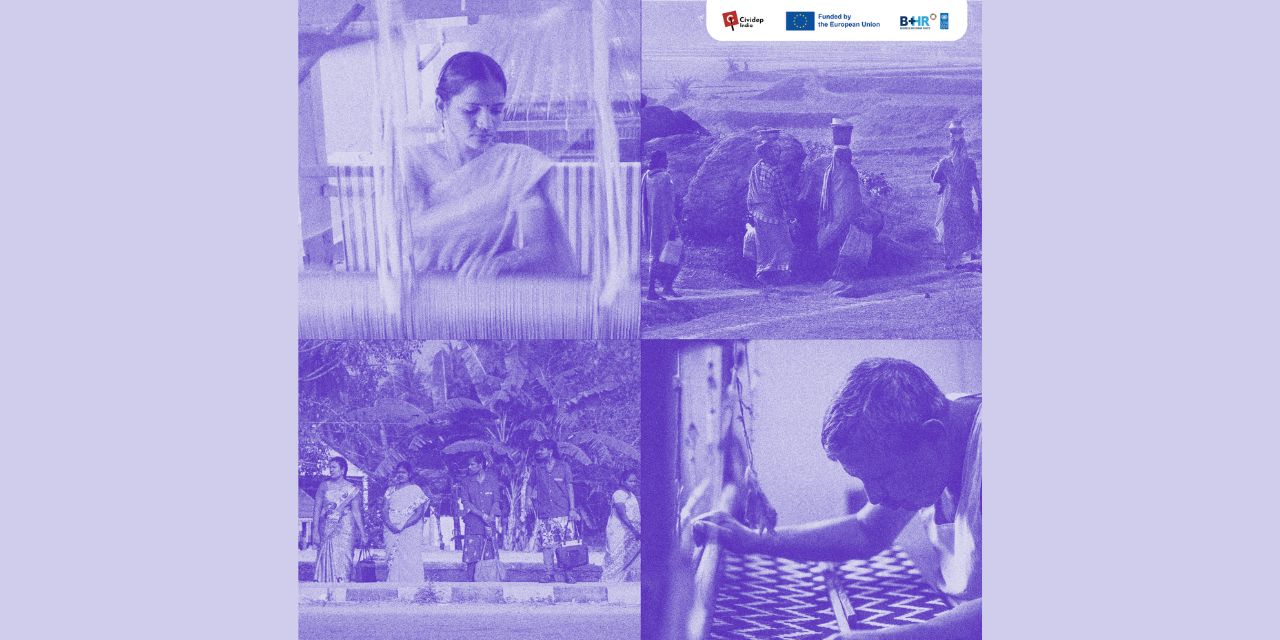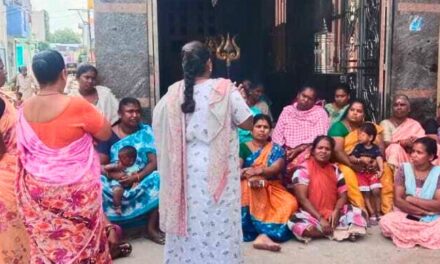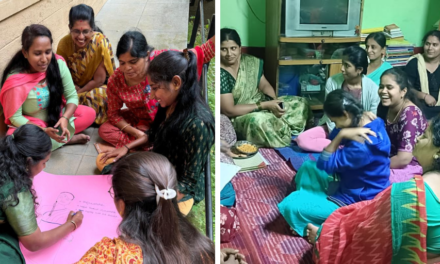In 2021, a 21-year-old Dalit garment factory worker from Tamil Nadu’s Dindigul district, was murdered by her factory supervisor . She was working at an apparel company run by a prominent readymade garment exporter in the region. The incident brought to light a largely overlooked issue – the lack of accountability with regard to cases of Gender-Based Violence and Harassment (GBVH), including sexual harassment, in the garment industry. This has often led to similar incidents in the past.
Consequently, a campaign was organised by a local textile workers’ union along with national and international civil society organisations to bring justice by putting pressure on the factory, supplier/exporter, and its buyers – international fashion brands. Their efforts finally led to a landmark agreement in 2022 between the union and the export company to end GBVH at their factories in Dindigul, which employ more than 5000 workers (mostly women from marginalised backgrounds). Parallely, the campaign stakeholders also signed a legally binding agreement with several multinational fashion companies, that source garments from the supplier. These two interlocking contracts are an Enforceable Brand Agreement (EBA) known together as The Dindigul Agreement to Eliminate Gender-Based Violence and Harassment.
The Dindigul Agreement is the first EBA in India and is also the first such agreement in Asia focussing on gender and caste discrimination. Among other things, the agreement draft itself relies on national and international labour standards and best practices, including International Labour Organization Convention 190 (Violence and Harassment Convention), Convention 87 (Freedom of Association and Protection of the Right to Organize Convention), and Convention 98 (The Right to Organize and Collective Bargaining Convention); the OECD Guidelines for Multinational Enterprises and the OECD’s garment and footwear sector guidance; and India’s Sexual Harassment of Women at Workplace (Prevention, Prohibition and Redressal) Act, 2013 (PoSH).
What Are BHR standards?
These ILO Conventions and the OECD guidelines stated above are examples of Business & Human Rights (BHR) standards. Simply put, BHR standards address the adverse impact of business activities on labour and human rights and ensure that businesses contribute positively to societal and environmental well-being through internationally accepted guidelines, standards, and laws. Although BHR standards may not be legally binding, they ai to set standards and benchmarks. They provide a comprehensive checklist of the standards that governments should strive to achieve and that enterprises are expected to uphold concerning labor and human rights. Many recent Global Framework Agreements (GFAs) and Enforceable Binding Agreements (EBAs) signed by worker collectives reference the labour principles of BHR standards, demonstrating their practical impact.
Learn More About BHR standards
This is why Cividep India is excited to announce the launch of our new handbook on Business and Human Rights (BHR), produced in collaboration with the UNDP Business and Human Rights (B+HR) program. It is envisioned as a guide for worker collectives and grassroots labour rights organisations in India. The handbook aims to demystify the complex landscape of BHR and empower those working on the front lines of labour rights to leverage them effectively.
Five reasons you should read this handbook
1. Bridges the Gap: Understanding BHR Standards
Our handbook introduces major BHR standards and illustrates their practical application in improving working conditions within global supply chains. It explains why worker collectives should engage with them, how they have evolved over the last several decades, and how BHR differs from Corporate Social Responsibility (CSR).
2. Explores the linkages between labour rights and BHR standards
Our handbook elaborates how international labour standards are integral to BHR standards and guidelines. For example, it outlines how international BHR standards, such as the UNGPs, the ILO MNE Declaration, the OECD Guidelines, and India’s NGRBC, all emphasize labour rights, particularly Freedom of Association.
3. Demystifies the Jargon
A significant barrier to the effective use of BHR standards has been the prevalence of jargon. Many grassroots groups have expressed their frustration with the terminologies often used in BHR discourse. Our handbook addresses this by breaking down these terms into simple, understandable language.
4. A Comprehensive Resource
Our handbook is designed to be a go-to reference for anyone interested in BHR standards. It provides a wealth of basic and practical information, including key concepts, definitions, and additional resources. Moreover, it features case studies of organisations and campaigns that have successfully utilized BHR standards.
5. A Framework for Dialogue and Action
The handbook defines the roles and responsibilities of governments and businesses with respect to labour rights, under the various BHR standards. Worker collectives can use these as a reference point in their discussions with governments and businesses. It also explains grievance mechanisms available under some of these BHR standards, which collectives can use as a means to access remedy in cases of corporate abuse.
The handbook also provides an overview of the newly emerging human rights-based legislation and regulation in the Global North, which can be even used by supply chain workers in India.
Looking ahead, we hope that this handbook can be a useful resource in supporting, promoting, and implementing better labour standards across all supply chains. We invite you to explore this handbook and join us in the journey towards decent work and human rights for all.
For more information and to download the handbook, visit our website here.






